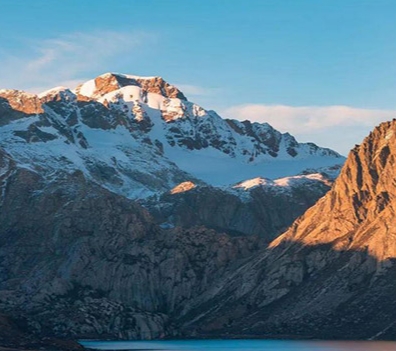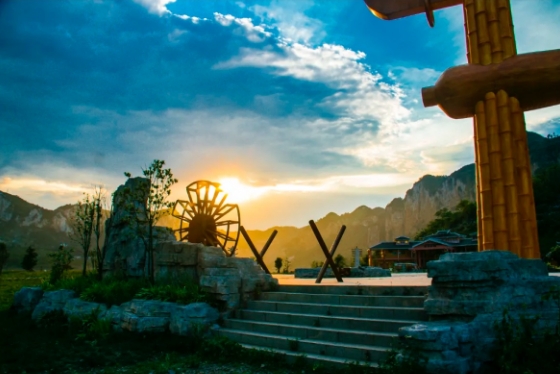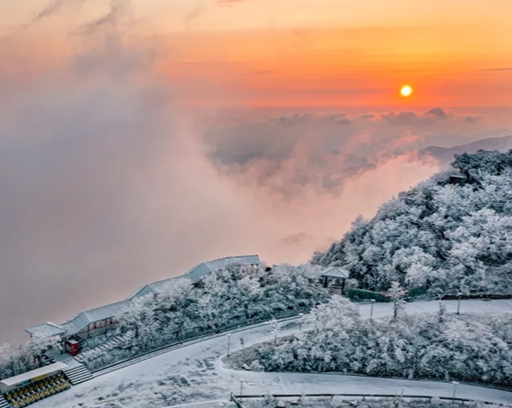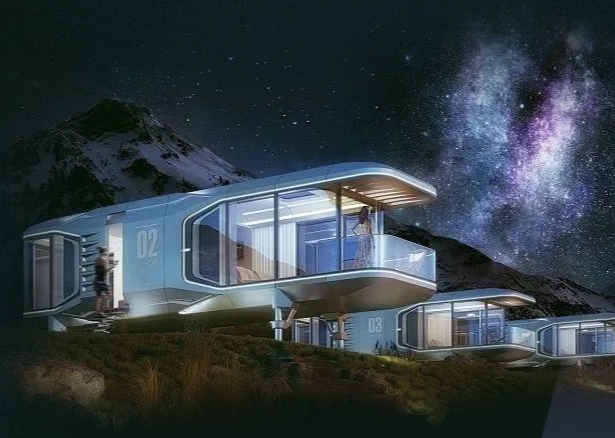
| Corn cobs Huamao. [Photo by Bruce Connolly/chinadaily.com.cn] |
For Bruce Connolly a visit to Guizhou provided an opportunity to capture images of this beautiful land and also reflect about rural life and the area's future.
China today is home to some of the world's largest cities, whose populations often exceed that of many western countries. Images many people hold of contemporary China include, for example, the skyline of Shanghai's Pudong district. However this reflects but a tiny period in the nation's long history. As recently as 1978 only 16 percentpercent of China's population was urban. By 2012 more than half the country had urbanized, a figure closer to 60 percent today. Despite the push towards urbanization physically most of the country's land surface has not been “concreted over” by the spread of high-rise buildings. Indeed, extensive areas of China remain uninhabited!
Personally, rural China has always fascinated and captivated me more than the giant metropolises despite their often world-leading architecture. With the countryside, I see a story of man's relationship with land, water and seasonal climatic cycles. Of being able to work the soil, to produce bountiful crops, to rear animals and to feed the people. Regularly during my travels I sat for hours transfixed, thinking of this relationship, how it all comes together, how it works.
For China, rural life usually centers around the village. The village through history has been a key element within Chinese rural society. It is where decisions on farming strategies are communally agreed upon and from where people for centuries have gone out to the fields working as a team. Villages of course take on regional differences in layout and architectural style, many also being home to the country's various, colorful ethnic nationalities.

| Water and the land Guizhou. [Photo by Bruce Connolly/chinadaily.com.cn] |
In recent years rural China has witnessed a great loss of population as many physically able people have migrated towards urban centers in search of wealth seemingly unobtainable by remaining in the countryside. Rural areas were viewed too often more in the context of poverty and deprivation, which is quite the opposite to Western concepts of idyllic rural life. However, losing the rural population is not good for the long-term - a country needs people to produce food. Solutions have to be found where people feel content continuing to live and work within a rural environment.
Southwest China presents a physically beautiful, stunning landscape. A year-round mild climate facilitates cultivation where topographically possible. Much of the land is limestone -- pinnacle peaks rise between relatively limited areas of flat, cultivable land. Terracing occurs where slopes are not totally vertical although water accessibility is a problem with much flowing underground.
Guizhou proved truly fascinating, indeed enchanting, when I was there recently, for it appeared that village and small-town life remains much more significant than in eastern provinces. Guizhou struck me as a landscape where man and the elements have come together, where traditions of land management go back many centuries to produce successful harvests. Despite the idyllic appearance it was obvious however that deep down a hard life still prevailed in parts. Ninety-five percent of the province is mountainous, creating many problems in developing traditional farming - a significant factor in rural poverty. Some children continued to walk lengthy distances along country roads to and from school while access to modern health facilities could entail lengthy journeys. Limited public transport indeed creates isolation for communities. However Guizhou is pivotal to the central government's determination to greatly reduce rural deprivation, to diminish urban-rural disparities while aiming towards a more equal society.

| Limestone peak Guizhou. [Photo by Bruce Connolly/chinadaily.com.cn] |
Approaching Zunyi Airport on the flight from Beijing, I was enthralled by the pattern of villages, fields, forests and hills spread out below, a landscape that transfixed me as we drove toward the city. But it was the drive out to Huamao and Gouba villages where I was able to watch the many interrelationships: of how water resources were managed to ensure irrigation sometimes through wooden pipes to the soil; of land under cultivation while some lay in fallow; of narrow paths providing access to and between fields. It was a scene which in past years would have been dominated by human activity although some mechanical ploughing had been introduced. It was thoughtful to remember the generations of people over time who would have toiled that soil to provide sustenance for their families. If only the land could talk, for there must be many unwritten stories of the people who lived their entire lives within this enchanting valley, or of the armies who passed through during troubled times. I wondered also of the relationship between the hills, the rivers and the locations of the villages, indeed the layout of the villages and whether feng shui principles historically applied?
It was also noticeable that considerable landscaping and environmental work had occurred, providing a more welcoming atmosphere for visitors who were being encouraged to enjoy farm-stay holiday experiences. Indeed guesthouses and small hotels retained the area's architectural character. While maintaining farming activities, the area was tapping into its intrinsic beauty to attract money-spending urban visitors. Sustainable tourism, if managed carefully, is one way forward for parts of rural Guizhou.
Both villages, Gouba and Huamao, although literally minutes apart, provided quite different but equally fascinating experiences. Gouba retained more of the iconic wooden architectural structures associated with this area. It is fascinating travelling across China to observe not only regional variations in style but also how use of locally available materials for construction influences design. Most buildings have been renovated while keeping their traditional format so presenting a clean, pleasant format for visitors. Gouba, accessible along a series of stone paths, with informative bilingual sign boards, spreads amidst forest below steeply rising pinnacle hills. It is highly photogenic with many items of everyday rural life scattered outside or below the cottages. We were seeing villages as they are today but most have occupied their location for many hundreds of years, or longer. Indeed the landscape felt timeless - mist rolled around forested hills above the village in scenes exactly as they were centuries ago. When clouds parted, houses could be seen perched high above with patches of cultivation amongst the trees. The images resembled old Chinese watercolor paintings.

| Beauty of Gouba. [Photo by Bruce Connolly/chinadaily.com.cn] |
What was life like until recently, before good roads were constructed? Many people would spend their entire lives within the village community. Even a visit to Zunyi, presently under an hour's drive, would have been several days away.
Today in response to tourism, small village craft industries have developed such as decorative paper umbrellas and local foodstuffs. But what helped stimulate visitor numbers was “Red Tourism” -- the heroic Long March passed through Gouba in the mid 1930s. Visitors can learn of the conference held in the village, view the former dormitory of Chairman Mao Zedong or hike along part of the Long March route. Could this someday be transformed into China's first long distance walkway?
Huamao is only a few-minute stroll from Gouba but quite different in appearance, layout and concepts. While Gouba focuses its development more on traditional style and its revolutionary history, Huamao has been rebuilt with modern two-floor buildings incorporating the local style, which provide both a living and a work space for local people. From the main road we followed Jiangxin Street (Jiangxin refers to the “craftsman's spirit), where workshops and commercial outlets were at ground level so visitors could watch and participate in a range of activities including iron working, food processing, pottery, arts and crafts. One sold fiery local spirit wine! Some buildings offered guesthouse facilities providing a rural experience along with stunning views of the surrounding landscape. This again enthralled me as I stopped frequently to absorb and photograph the man-land relationships spread out before me. My eyes also lifted to the surrounding misty hills that simply enhanced the sheer beauty.

| Happiness at work in rural Guizhou. [Photo by Bruce Connolly/chinadaily.com.cn] |
Around Huamao modern greenhouses have appeared, providing efficient technology combining with the local clean air and water to produce quality vegetables. Such developments will hopefully boost local incomes while encouraging people to return to the valley from the cities. The greenhouses were visited by President Xi Jinping in June 2015 during his inspection of Huamao, a moment that put the village squarely on the map while stimulating its tourist numbers.
President Xi, although impressed with local success in reversing rural poverty, has stressed the need for sustainability in developing village tourism to prevent it from becoming saturated through overdevelopment. He stressed that while there is success today with creating home-stay holidays, for example, there must be long term planning to maintain the attractions of the area.
Rural Guizhou presents a journey along a road less travelled in today's modern China. The visitor is left with unforgettable memories stimulating a longing to return. Something I certainly plan to do, to photograph more of beautiful Guizhou.

Farming at Huamao. [Photo by Bruce Connolly/chinadaily.com.cn]

Gouba Village. [Photo by Bruce Connolly/chinadaily.com.cn]

Farmer with long stem pipe Gouba. [Photo by Bruce Connolly/chinadaily.com.cn]

Cottage in the forest Gouba. [Photo by Bruce Connolly/chinadaily.com.cn]

Sheer beauty around Gouba. [Photo by Bruce Connolly/chinadaily.com.cn]

Almost a painting near Huamao. [Photo by Bruce Connolly/chinadaily.com.cn]

Village and pinnacles Guizhou. [Photo by Bruce Connolly/chinadaily.com.cn]

Rural beauty near Gouba. [Photo by Bruce Connolly/chinadaily.com.cn]

Evening over a river Guizhou. [Photo by Bruce Connolly/chinadaily.com.cn]

Evening in Guizhou. [Photo by Bruce Connolly/chinadaily.com.cn]

Rural tranquility near Huamao. [Photo by Bruce Connolly/chinadaily.com.cn]








